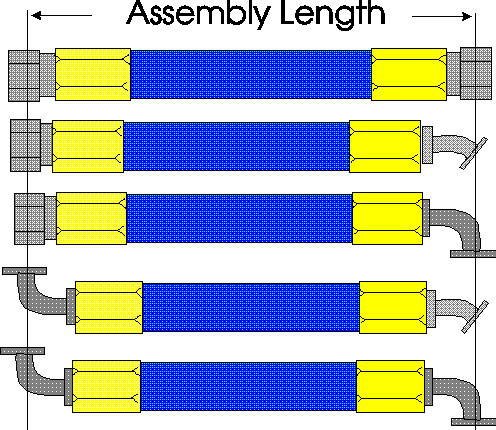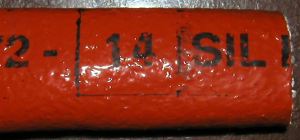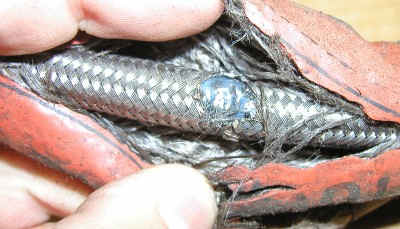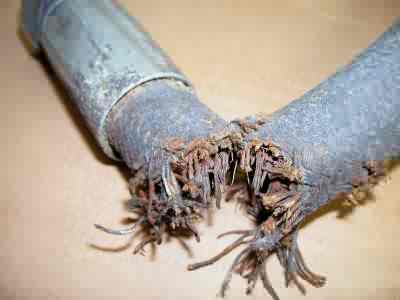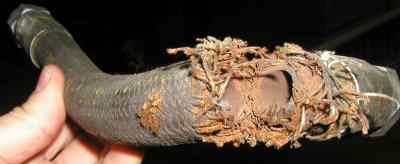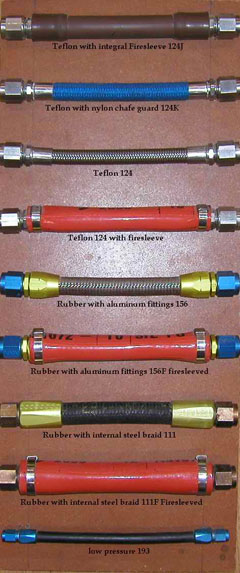Aircraft Hoses
EVWM can preform maintenance, repairs, new and complete overhaul of your aircraft hoses. In any length or for any type of aircraft.EVWM can certify the hoses for you under FAA rules.
Below is a explanation what you need to look for while looking at hoses.
How long should I make a aircraft hose?
An easy method of determining how long to make a hose is to take a stiff wire such as a coat hangar or welding rod and route it just as you would route the hose. Then measure the length of the coat hanger and that is how long your hose should be. Keep in mind the minimum bend radius of the hose. Be sure to keep enough seperation from the hoses to hot components such as exhaust systems. Note: The shorter the hose the more accurate the hose measurement will have to be.
How to specify aircraft hose assembly length?
Aircraft Hose Assembly Length:
Aircraft hose assembly length is measured from end of nipple to end of nipple, or flare to flare (more accurately at the outside edge of the flare). This is the same as connection length (the distance between connections). Length is defined in inches and 1/8th of an inch. An Example is 0244 which means 24 inches and 4/8 of an inch.
Note: the shorter the hose the more accurate the hose measurement will have to be.
Preventing Confusion when ordering Hoses.
When ordering hoses you need to now that the length measurement is based on a "flare-to-flare" (assembly length) measurement and not some other measurement. Orders come in for hoses where the measurement is based on the absolute length (end of nut to end of nut) of the hose. We can convert this measurement to a "flare-to-flare" if we are clear on the datum point! The terminology we prefer is either "flare-to-flare" or "end of nut to end of nut".
Aircraft Hose Minimum Bend Radius:
Minimum bend radius - the minimum curvature of the hose that is recommended for installation. The curvature is measured from the outside diameter of the hose on the inside of the curvature.
Fire Protection:
Aircraft hose assemblies located partially or totally in "Fire Zones" must have fire protection. "Fire Zone" is the area of the engine compartment forward of the firewall. The FAA recognizes two types of fire protection in regards to aircraft hose assemblies, fire resistant, and fire proof. In all cases fire protection is provided using two methods:
1. Silicone covered fiberglass (Firesleeve , p/n 2650-size)
2. Integral extruded (molded silicone Firesleeve) Fire resistant requires a 5 minute flame exposure with fluid flow. Fire proof requires a 15 minute flame test with fluid flow.
Chafe damage to hose. If a hose is allowed to chafe or allowed to rest against a hot exhaust component it may be quickly damaged. Hose life is also determined by good maintenance practices and hose inspections. A hose resting against a hot exhaust component may require replacement before the next flight.
Corrosion damage to common hose (MIL-H-8794 Stratoflex 111 or Aeroquip 303). This type of hose uses a carbon steel braid under a fabric cover. Hidden corrosion damage occurs under the fabric where it cannot be seen. Another area of corrosion is under the fitting socket. This hose is proof tested when new at 4,000 psi yet I was able to brake it in half with my hands. The outside appearance before it was broken was not too bad. If the hose makes crackle noises as you bend it then you have one of these and should replace it before the next flight.
It makes you wonder how this hose made it past so many annual inspections before it was replaced.
Hydraulic Hoses and Heat require special attention. Hoses that have fuel or oil inside are internally cooled by the flow of fluid. Hoses that have no or very little fluid flow such as hydraulic lines cannot dissipate heat. For example, 111 hose which is commonly used in the engine compartment with fuel, oil, and hydraulic is MIL-H-8794 rated to 240 degrees F for fuel and oil applications but only 165 degrees F for hydraulic applications!
Hydraulic hoses need to be protected from heat sources. Problems have been seen in the nosewheel hydraulic extension hose in the Commander 114 aircraft. After a year or so the hose (even tho it was fireseleeved) became heat damaged, cracks and leaks appeared.
Firesleeve installation tips. Firesleeves should be cut slightly longer than desired as the Firesleeve shortens slightly when you push the hose through and the Firesleeve expands. Also, if the hose has a bend it will be necessary to cut the Firesleeve slightly longer to make up for the extra length required on the bend.
Coated Firesleeves ends with red RTV to prevent liquid wicking up sleeve.
Age Limitations and Aircraft Hose Life:
Introduction:
There has come concern within the industry about the misuse of shelf-life and service life. Storage conditions and the environment in which the product is used is more important in determining the useful life than calendar time. Often audits and documentation practices only include shelf life and disregard storage conditions.
In many instances, maintenance manuals include a service life requirement for hoses but have no service inspection or condition replacement criteria. Such policies are wasteful in that perfectly good products are scraped; and such policies are dangerous as products that have been degraded because of harsh storage conditions or operating environment are kept in service.
Service life is installation dependent. For example, we can see a rubber hose that has been on the aircraft for over 20 years, yet the same rubber hose exposed to high heat next to an exhaust system may have a service life of several weeks (or until bent). It is our experience that a rubber hose carrying 100 low lead avgas ages faster than the same hose carrying engine oil. What is the service life of a hose? As one aerospace hose manufacturer states: "Only the user can establish this period."
Shelf Life:
Reference AS 1933 revision A. (replaces MIL-STD-1523) for rubber age limitation. Generally, 32 quarters (8 years) --at acceptance by ultimate user/customer.
AS 1933 may not mean that a hose that is beyond 32 quarters cannot be installed. For example, the customer could purchase (accept) the hose before 32 quarters and then subject the hose to shelf storage until such time as the customer is ready to install the hose. Shelf storage is measured from acceptance. The Navy, in NAVAIR 01-1A-20 could put the hose into storage for an additional 5 years (MIL-HDBK-695). Do not confuse Shelf Life with Shelf Storage.
Service Life:
Service life depends upon service conditions. The hose manufacturer is often unaware of service conditions, so the best they can do is offer general guidelines. The airframe/engine manufacturer or maintenance entity is in the best position to establish Service Life as they are the most knowledgeable as to the service conditions.
To quote from Eaton (Aeroquip):
The actual service life of a given hose assembly, in a given application, is dependent on many variable factors. These variable factors may include, but are not limited to, operating pressure, pressure surges, flexing, operating temperatures (both fluid and ambient), installed bend radius, cleaning solutions, ozone and assembly routing. Due to the variety of operating conditions and applications, the user, through their own analysis, testing and/or review of maintenance records and data, is ultimately responsible for making the final selection, of or decisions about replacement hose assemblies and assuring that all performance, safety and warning requirements of the application are met.
Eaton (Aeroquip) for example, has published general criteria to help you establish Service Life. They have separated the hose application into 3 general categories and suggested a Service Life for each category. These categories are:
1. Normal Duty Hoses
Typically, these are hose assemblies in less demanding applications, such as in-body, in-wing or other applications not normally exposed to the environment, cleaning fluids, continuous temperature extremes, heavy pressure pulsation, etc., and having infrequent maintenance actions associated with their installation. Recommended Maintenance Approach: On Condition
2. Moderate or Heavy Duty Hoses
Typically, these are hoses exposed to more frequent maintenance activity or major system removal, or hoses occasionally exposed to environmental conditions (e.g., upper wheel well hoses, APU hoses) Recommended Maintenance Approach: Either On-Condition or based on user data and maintenance records.
3. Demanding or Severe Duty Hoses
Typically, these are hoses continuously or routinely exposed to environmental, cleaning, or other harsh operating variables such as landing gear brake hoses, EDP hoses, etc., and associated with major systems requiring regular removal, repair or overhaul. Recommended Maintenance Approach: Strongly consider replacement at time of major system overhaul.
--end Eaton Quote--
In addition to the above you might consider establishing a more conservative service life, and a more aggressive inspection criteria, on critical hose assemblies. Critical hose assemblies are those that if they fail to function properly may jeopardize the safety of the vehicle, flight crew, or passengers. For example, a fuel line is always critical, a potable water line is not.
Regulatory Life
Some hose products or installations require replacement based on regulations or maintenance dictates. For example, Airworthiness Directive 81-19-04 requires that certain aircraft with Rajay STC'd turbocharger installations to replace hoses every 5 years. Such hoses are life limited by regulation even if those hoses are otherwise safe to use. Such hoses may pass inspection and be found serviceable in another application but in this application they are regulatory life limited.
Inspection Criteria
If the maintenance manual is deficient on hose inspection criteria, one source for further information is the following:
SAE ARP 1658 (Aerospace Recommended Practice) "Visual Inspection Guide for Installed Hose Assemblies". This recommended practice covers visible surface defects on aerospace hose assemblies which have been installed and are functioning within a working environment at the time of visual inspection. Both Stratoflex and Eaton (Aeroquip) make reference to ARP 1658 for hose visual inspection.
